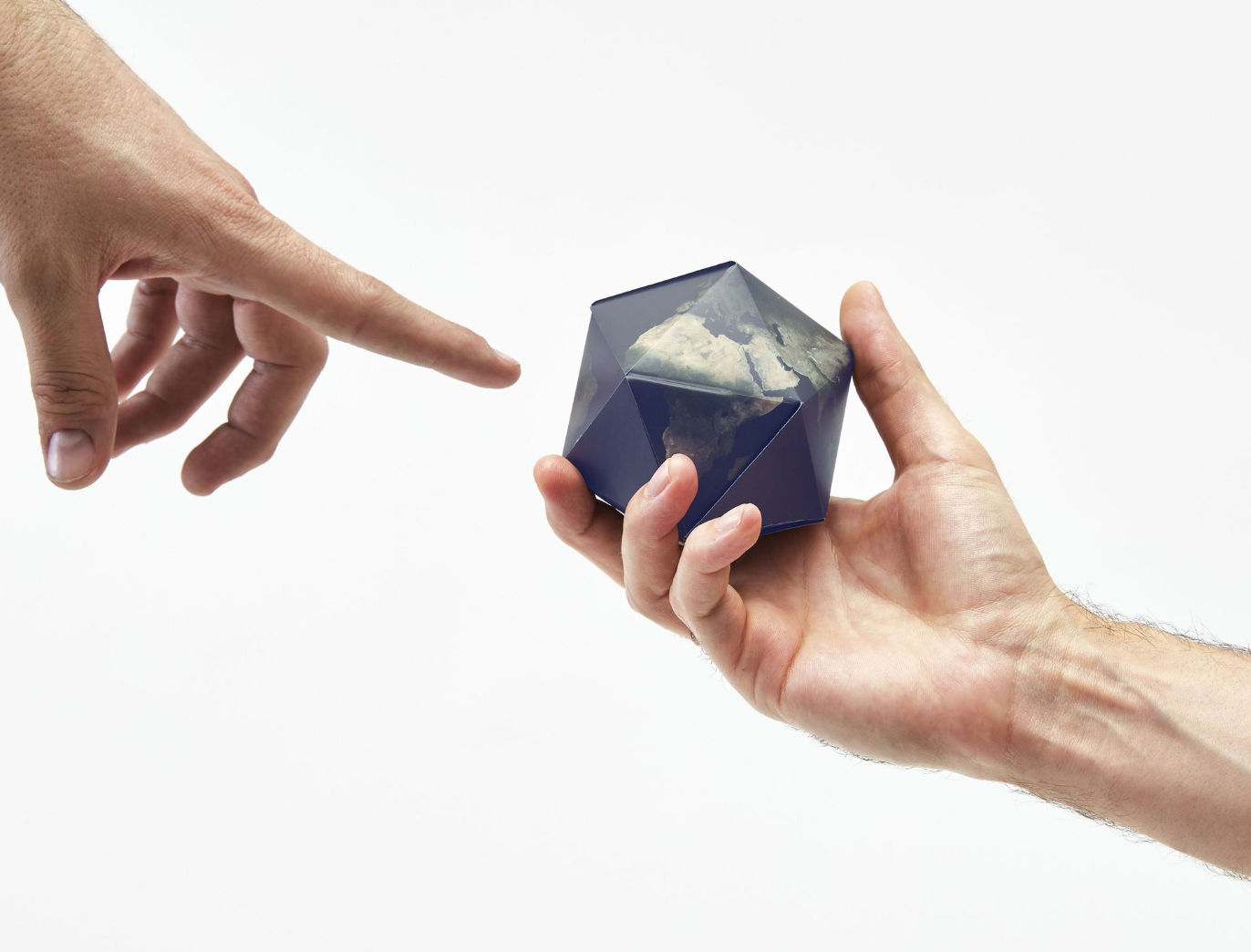Dymaxion Globe


Dymaxion Globe
Buckminster Fuller has long had a place in our Studio’s pantheon of design heroes. Bucky was a 20th century inventor and futurist who devoted his life to trying to “make the world work for 100% of humanity.” Frustrated by the inaccurate and biased maps of his day, Bucky created a new map projection to display the continents with the least amount of distortion. His first Dymaxion map, patented in 1948, utilized a Cube Octahedron to display the continents as one island of nearly contiguous land mass floating in an unbroken sea.
Following the success of the first Dymaxion projection, Bucky revisited the project again in 1954 with help from the Japanese architect Shoji Sadao to create the Raleigh Projection. This new projection caused even less distortion than the original version and was the one that eventually became best known.
Continued below

When you look at the Dymaxion projection flat, it practically screams to be cut out and assembled. The visible geometry at the edges of the map inferr their mating pair like jigsaw puzzle pieces. Indeed, there were already Dymaxion maps out there that incorporated gluing tabs or cut paper grooves to allow users to transform the map into a globe. But once built, those versions don’t facilitate disassembly, they remain static.
So we designed our magnetic foldaform version of the Dymaxion globe to be a pleasure to assemble and dissemble - again and again. It’s a map-globe hybrid that involves an element of puzzle solving in its transformation. Licensed and produced by Areaware since 2016, part of every sale of the Dymaxion Globe goes to support the work of the Buckminster Fuller Institute.







